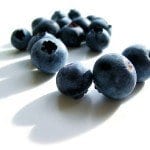allspice, 1 teaspoon ground
1/2 teaspoon cinnamon and 1/4 teaspoon each, nutmeg and ground cloves
1/2 teaspoon cinnamon and 1/2 teaspoon cloves
amaretto, 2 tablespoons
1/4 to 1/2 teaspoon almond extract
arrowroot, 1 1/2 teaspoons
1 tablespoon flour
baking powder, 1 teaspoon
1/4 teaspoon baking soda and 5/8 teaspoon cream of tartar
baking powder, 2 tablespoons
1 teaspoon cream of tartar and 1/2 teaspoon baking soda
balsamic vinegar, 1 tablespoon
1 tablespoon red wine vinegar plus 1/2 teaspoon sugar
bamboo shoots
asparagus in fried recipes
bergamot
mint
bouquet garni, 1 teaspoon
1/2 teaspoon each dried parsley flakes, dried thyme leaves, and 1 bay leaf (crushed)
butter, 1 cup
7/8 cup vegetable shortening
buttermilk, 1 cup
1 tablespoon distilled white vinegar or lemon juice stirred into 1 cup soy milk and allowed to stand for 5 minutes
cake yeast, 5/8-ounce cake
1 packet active dry yeast
champagne
ginger ale
chayotes
yellow summer squash
chervil, 1 teaspoon
1 teaspoon dried parsley flakes plus 1/8 teaspoon rubbed, dried sage
chili sauce
ketchup with prepared horseradish and lemon juice to taste
chinese black vinegar
balsamic vinegar
chocolate, semi-sweet, 1 ounce
3 tablespoons chocolate chips or 1/2 ounce unsweetened chocolate plus 1 tablespoon sugar
cinnamon, 1 teaspoon ground
1/2 teaspoon ground allspice or 1 teaspoon ground cardamom
cocoa, unsweetened
Dutch-processed cocoa
coconut milk, 2 cups
combine 2 1/2 cups water and 2 cups shredded, unsweetened coconut and bring to a boil. remove from heat; cool. mix in a blender for 2 minutes; strain.
cognac
peach, apricot, or pear juice
cornstarch for thickening, 1 tablespoon
2 tablespoons all-purpose flour or 1 tablespoon potato, rice, or arrowroot starch
creme de menth
spearmint extract or oil of spearmint diluted with a little water or grapefruit juice for white; for green add a drop of green food coloring
delicata squash
butternut squash or sweet potatoes
dry bread crumbs, 1/4 cup
1 sandwich-size slice crisp bread, crushed
dry red wine
red grape juice, cranberry juice, vegetable broth
eggs, 1 egg
1 1/2 teaspoons powder Ener-G Egg Replacer plus 2 tablespoons water for baking and binding
five-spice powder
equal parts cinnamon, cloves, fennel seeds, star anise and Szechuan peppercorns
flour, 1 cup
1 1/2 cups fine bread crumbs
flour, all-purpose, 1 cup
1 cup plus 2 tablespoons cake flour
flour, cake, 1 cup
1 cup minus 2 tablespoons all-purpose flour
flour, self-rising, 1 cup
1 cup all-purpose flour plus 1 1/2 teaspoons baking powder and 1/2 teaspoon salt
fresh herbs, 1 tablespoon
1 teaspoon dried herbs
garlic, 1 clove
1/8 teaspoon garlic powder
ginger, 1/2 teaspoon grated
1/4 teaspoon ground ginger
ginger, 1 teaspoon ground
1/2 teaspoon ground mace plus 1/2 teaspoon grated Lemon peel
grand marnier or orange flavored liqueur, 2 tablespoons
2 tablespoons unsweetened orange juice and 1/2 teaspoon orange extract
green mangoes
sour, green cooking apples
green or red bell pepper, 2 tablespoons chopped
1 tablespoon sweet pepper flakes (let stand in liquid as directed)
habanero peppers
5 jalapeno peppers or serrano peppers
italian herb seasoning
mixture of oregano, marjoram, thyme, basil, rosemary and sage
kahlua or coffee or chocolate flavored liqueur, 2 tablespoons
1/2 to 1 teaspoon chocolate extract or 1/2 teaspoon to 1 teaspoon instant coffee in 2 tablespoons water
ketchup or tomato-based chili sauce, 1 cup
1 8 oz. can tomato sauce plus 1/2 cup granulated sugar and 2 tablespoons distilled white vinegar kirsch
cherry, rasberry, or currant syrup
lemon grass, 1 tablespoon minced
1 teaspoon grated lemon rind
lemon juice, 1 teaspoon
1/2 teaspoon white wine vinegar or cider vinegar
lemon juice, 1 lemon
3 tablespoons
bottled lemon juice
lemon peel, 1 teaspoon minced or zest of 1 lemon
1 teaspoon dry lemon peel light brown sugar, 1 cup 1/2 cup dark brown sugar and 1/2 cup granulated sugar
mint chocolate chips
in an airtight container add 1/8 teaspoon of peppermint extract to a 12 oz. bag of dark chocolate chips. let sit for 24 hours.
mushrooms
diced celery
mustard, dry, 1 teaspoon
1 tablespoon prepared mustard
mustard, prepared, 1 teaspoon
1 teaspoon dry mustard mixed with 2 teaspoons wine vinegar, white wine or water
nutmeg, 1 teaspoon ground
1 teaspoon ground allspice or 1 teaspoon ground cloves or 1 teaspoon ground mace
oats, old fashioned rolled
quick cooking oats
onion, 1/4 cup minced
1 tablespoon instant minced onion (let stand in liquid as directed)
onion, 1 medium onion
2 teaspoons onion powder
orange juice, 1 medium orange
1/4 cup reconstituted frozen orange juice
orange peel, 1 teaspoon grated
1 teaspoon dry orange peel
palm sugar
light brown sugar
parsley, 2 tablespoons minced
1 tablespoon parsley flakes
pine nuts
walnuts or almonds
port wine
red grape juice
poultry seasoning, 1 teaspoon 1/4 teaspoon
ground thyme plus 3/4 teaspoon ground sage
pumpkin pie spice, 1 teaspoon
1/2 teaspoon cinnamon mixed with 1/8 teaspoon each: ground ginger, nutmeg, mace, cloves
raisins, dark
golden raisins or currants
rum (light or dark)
water, white grape juice, pineapple juice, apple juice, apple cider, syrup flavored with almond extract
saffron
turmeric, for color
sake or rice wine
dry sherry or dry vermouth
seasoned rice vinegar, 1 tablespoon
1 tablespoon rice vinegar or white vinegar, 1/2 teaspoon sugar and 1/8 teaspoon salt
self-rising flour, 1 cup
1 cup all purpose flour plus 1 1/2 teaspoons baking powder and 1/8 teaspoon salt
shallots
red onions or spanish onions
sherry
orange juice, pineapple juice, peach syrup
shortening, 1 cup
1 cup margarine
sifted cake flour, 1 cup
3/4 cup plus 2 tablespoons sifted all-purpose flour or all-purpose flour sifted 3 times, then measured to make 1 cup
sour cream, 1 cup
1 cup plain soy yogurt
sugar, granulated, 1 cup
1 cup firmly packed brown sugar, flavor will be affected 1/2 cup corn syrup or molasses and reduce liquid in recipe by 1/2 cup
sugar, powdered, 1 cup
1 cup granulated sugar plus 1/8 teaspoon cornstarch processed in a food processor fitted with a metal blade
sweet white wine
White grape juice plus 1 tablespoon white Karo syrup
tamarind juice
5 parts ketchup to 1 part vinegar
tamarind paste, 1 tablespoon
1 teaspoon each, date, prunes, dried apricots, lemon juice
tomatoes, 1 can (1 lb.)
2 1/2 cups chopped, peeled fresh tomatoes, simmered for about 10 minutes
tomato juice, 1 cup
1/2 cup tomato sauce plus 1/2 cup water
tomato paste
ketchup
tomato sauce, 1 cup
3/8 cup tomato paste and 1/2 cup water
vanilla bean, 1
1 teaspoon pure vanilla extract
whipped cream, 1 cup
puree a banana, then whip with the equivalent of an egg white. add vanilla and sugar to taste
whipping cream (40% fat), 1 cup
1/3 cup margarine plus 3/4 cup soy milk
white wine, for cooking
dry vermouth, water, vegetable broth, liquid drained from canned vegetables, ginger ale, white grape juice
wine, 1/2 cup
1/2 cup fruit juice for desserts and 1 /2 cup vegetable broth for savory recipes
Mayonnaise
Mustard
Sour cream
Plain nonfat or low-fat yogurt or nonfat sour cream
Whole milk, nondairy creamers, half-and-half
Skim (nonfat) or low-fat (1 percent) milk
Cheeses like cheddar, Swiss, American, Jack
Lower-fat cheeses like part-skim ricotta, low-fat and cream cheese, Jarlsberg, cottage cheese, and Neufchatel
Ice cream
Nonfat or low-fat frozen yogurt, ice milk, fruit ices, or sherbet
A whole egg
Two egg whites or 1/4 cup egg substitute
1 ounce baking chocolate
3 Tablespoons cocoa powder plus 1 tablespoon vegetable oil
Fat in baking recipes
Equal amounts fruit puree like prune, or applesauce
Whipping or heavy cream
Evaporated skim milk or one part skim milk and one part cream
Frying
Bake or roast on a rack, broil, grill, steam, or microwave
 What Makes
What Makes  Behold the Power of Grapefruit: In the 1980’s diet fanatics swore by anything that included grapefruit, but for many individuals the idea of living day in and day out with little more than grapefruit, toast and hard-boiled eggs left them anxious to explore other dietary options.
Behold the Power of Grapefruit: In the 1980’s diet fanatics swore by anything that included grapefruit, but for many individuals the idea of living day in and day out with little more than grapefruit, toast and hard-boiled eggs left them anxious to explore other dietary options.